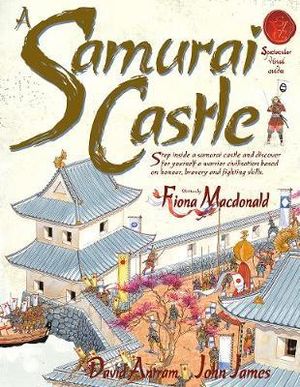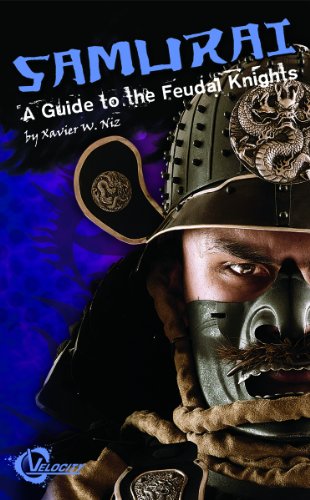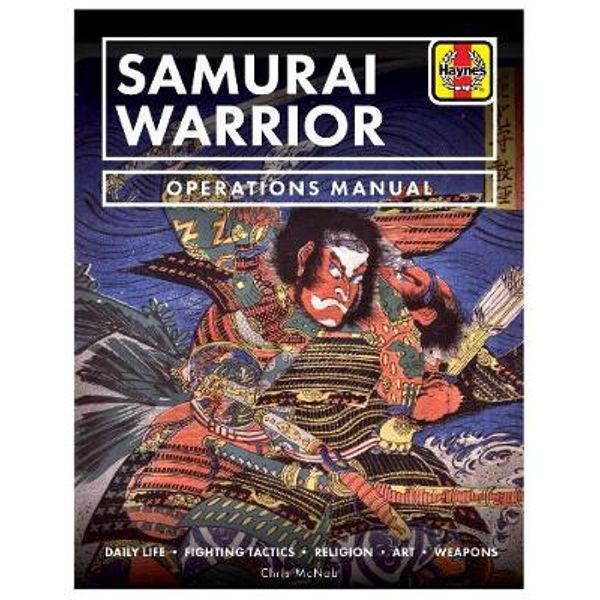



Source: Susann Schuster (2021)
The samurai (or bushi) were the warriors of premodern Japan. They later made up the ruling military class that eventually became the highest ranking social caste of the Edo Period (1603-1867). Samurai employed a range of weapons such as bows and arrows, spears and guns, but their main weapon and symbol was the sword.
Samurai were supposed to lead their lives according to the ethic code of bushido ("the way of the warrior"). Strongly Confucian in nature, bushido stressed concepts such as loyalty to one's master, self discipline and respectful, ethical behaviour. Many samurai were also drawn to the teachings and practices of Zen Buddhism. Learn more about the samurai by clicking through the tabs below.


A suit of armour with horse saddle, stirrups and trappings 1665
metal, wood, pigments, lacquer, gold paint, silk, cotton, leather, gilt.
18th century. Lacquer on metal (maki-e), wood, pigment, silk, cotton, leather, metal (thread).

Sketch, block-ready preparatory drawing ('hanshita-e') for unpublished print. Poem by Taira no Kanemori, young samurai seeking advice from a roadside physiognomist. Ink on paper.

Distinguished samurai from the 1500s to the 1800s wore flamboyant helmets designed and produced according to the warrior’s specifications. A distinctive helmet identified the wearer as a leader on the battlefield and ensured that his actions were visible to all. This iron mask—which has wrinkles, teeth, and whiskers along with an aggressive expression—is designed to cover the face below the eyes. The nose was made from a separate piece of iron and secured with pins, which allowed for its removal. The throat guard, fastened to the lower edge of the face cover, consists of four iron plates coated with brown-black lacquer. The plates are laced together with braided cords of dark blue silk.

This shallow circular hat (jingasa) was worn by a samurai on official outings. On the crown are inscribed three characters that read "Move slowly like a forest," a passage from the classic military tactics treatise written by Sun Mu of ancient China.
Jingasa are usually light. This one is made with leather covered with layers of paper. The textured surface is finished with brownish lacquer. Inside at the crown is a cushion; two padded straps on the sides secure the hat.

This woodblock print depicts a samurai warrior and was likely created in 1850.

The kosode is considered the precursor to the modern kimono. Kosode were first worn as undergarments in the end of the Heian period (794–1185); by the late medieval and early modern eras in Japan (the 1500s through the 1800s) they had come to be used as outer garments.
This kosode is of a type classified as goshodoki (literally, "imperial palace motifs"). Worn particularly by samurai-class women from the late 1700s through the early to mid-1800s, goshodoki kosode typically have floral or landscape themes, amid which are placed select motifs alluding to specific literary sources, often scenes from Heian period classical literature or from a Noh play. Over time, however, the themes of these kimonos became more homogenous, and popular motifs were grouped together to create a literary aura without reference to a particular literary source. Also, instead of being covered with designs, many later goshodoki kosode had undecorated upper sections, perhaps bearing only family crests, with patterns around the lower sections.
This kosode was executed using techniques typically seen in goshodoki pieces: The white paste-resist patterns on the pearl grey background were embellished with couched gold-wrapped threads and silk embroidery in red-orange, light orange, purple, yellow, and green. Some of the white-patterned areas were further decorated in red applied with a stencil dying technique known as hitta shibori, which created the effect of miniature tie-dyed dots. Other patterns were enhanced with fine hand-drawn ink lines.
The motifs found in this kosode's design include banana plants (basho), a rope curtain, flowing water, pines, ivy, chrysanthemums, bamboo, and rocks. The predominance of the banana leaves may allude to the Noh play Basho. The fact that the designs cover the entire kosode suggests that this work dates to the early 1800s.

The Tale of the Heike, which tells of the conflict between two powerful warrior families, was a popular source for screen-painting subjects. This screen, one of a pair, depicts an episode from Heike recounting an 1184 contest of military tactics and horsemanship between two warriors.
On a military campaign, Sasaki Shiro Takatsuna and Kajiwara Genta Kagesue approached the Uji River. The river was flooding, and its bridge was out; they had no choice but to swim their horses across. Each man seeking to be first, they dashed toward the river, with Kajiwara in the lead. Close behind him, Sasaki shouted, ”Your saddle looks loose, tighten it!” With Kajiwara’s attention diverted, Sasaki seized the lead, crossed the river, and ascended the opposite bank. Kajiwara’s horse was caught in the current and made land far downstream.
This painting depicts the moment when Sasaki, riding a chestnut horse, shouted at Kajiwara, who is mounted on a black horse.

Although there are various views as to the provenance of this sword, it is generally believed that the emperor at that time gave it to Minamoto Yorimasa to honor his killing of a monster. It was later given to the Toki family and in 1882, Toki Yorichika presented it to Emperor Meiji via Higashikuze Michitomi.
Deeply curved near the hilt, the slim blade has an antique and refined shape of the late Heian period with a fushigokoro (slightly bent downward) tip. The jigane (the ground metal) has a wood grain pattern in hadadachigokoro and shirokeutsuri (a vague white misty formation that runs parallel to the hamon in the ground metal). The hamon (literally "blade pattern," which is a visual effect created on the blade by the hardening process) is in the suguha (straight) style with a narrow nioiguchi (the dividing line between the hamon and the ground metal). Due to the high shinogi (the ridgeline) and the strong shinogiji (an area between the shinogi and the back of the blade) with a masame-hada (a straight grain pattern), it is believed that this sword was made in Yamato no Kuni in the late Heian period.
For the koshirae (outer fittings), the hilt, sheath and metal fittings are all black lacquered and blue thread is wrapped around the sheath. It seems that originally, the hilt was also wrapped with thread. This type of sword with black lacquered koshirae is depicted in many picture scrolls as a sword in common use among samurai. The year of creation seems to be in the late Kamakura period.

Wrapping the handle and the sheath with a thin metal plate in a spiral is called hirumaki, which was used for reinforcement and decoration purposes. The hirumaki sword is a type of koshirae (outer fittings) that was popular among samurai. For the handle, the bronze ground is plated with silver and wrapped with a cloth, which is coated with lacquer and over which metal fittings with a lion pattern are mounted. The sheath is lacquered in black and wrapped with silver and copper plates in three stripes (komochihirumaki) and the ashiai is lacquered and wrapped with a cloth in diamond (watarimaki). The kabutogane, fuchigane, semegane and ishizuki are made of silver and copper without any pattern. The tsuba (handguard) in the shape of mokko (platycrater) is lacquered in black and rimmed with a copper band. It is said that Nanbu Masanaga (? to 1360) used to wear this tachi.

This is a jinbaori (a sleeveless jacket) worn by Kobayakawa Hideaki (1582 – 1602), who sided with Tokugawa Iyeyasu at the Battle of Sekigahara while serving Toyotomi Hideyoshi. The red thick woolen cloth called raxa, which was described as "as red as Shojo," a Chinese fictitious being that loved drinking, was brought into Japan from Europe and became a popular material at the time. On the back of the red jacket, a bold pattern of a pair of crossed sickles made of white and black raxa is created using the kirihame technique (cutting out part of a cloth and then fit in a different cloth to form a pattern). A small heart-shaped design patched on the handles of the sickles is called inome in Japan. On the front side, there is a design of torii (the gateway at the entrance to a shrine) in twill weave brocade and small red buttons like those found on Western clothes. A jinbaori is worn over the armor on a battlefield. The torii may be designed as a symbol of divine protection on a dangerous battlefield. Such a charm can also be found also on the lining: On the lining of the back, the word "eternity" is embroidered in a circle with bluish green silk thread, which seems to mean a prayer for a lasting life. For the lining, white damask patterned with Western plants is used. This jacket shows that samurais regularly used rare European fabrics that the ships from Spain or Portugal brought into Japan during the Azuchi-Momoyama period.

Armor that is bound together on the back and was worn by lowly samurai is called "haramaki." Although it was originally composed only of a cuirass, sleeves and a helmet were added in the Muromachi period and together, it also became popular among warlords.
This haramaki is in the style of kurokawa-katasusodori-odoshi, where the top three tiers on the chest are bound together with white, red and white threads in this order, while the tiers below them are bound with black leather strings and the bottom two tiers with red and white threads. The hassokanamono (metal decoration) on the chest comprises a base, where a chrysanthemum branch pattern is applied via openwork and plated with copper and two pairs of double-petal chrysanthemum rivets. Other metal plates are wrapped with patterned leather called mojishigawa, fastened with kozakurabyo (small cherry blossom-shaped rivets) and rimmed with copper plated fukurin (a rim covering the edge of armor for protection or decoration). The sleeves are in the style of seven-tiered osode (literally big sleeves) bound with red, white and red threads for the first three tiers and black leather strings for the rest. This is a haramaki typical of the Muromachi period and is believed to have been owned by the Age family in Sanuki (current Kagawa).

Ishi-jo, wife of Oboshi Yoshio, one of the "47 loyal ronin." Print by Kuniyoshi, from the series Seichi Gishin Den, 1848.


 100 facts: samurai by
100 facts: samurai by  A samurai castle by
A samurai castle by  Samurai by
Samurai by  Samurai: a guide to the feudal knights by
Samurai: a guide to the feudal knights by  Samurai: an illustrated history by
Samurai: an illustrated history by  Samurai armies 1550-1615 by
Samurai armies 1550-1615 by  Samurai women 1184-1877 by
Samurai women 1184-1877 by  The samurai by
The samurai by  The samurai of Japan by
The samurai of Japan by  Arms and armour of the Samurai by
Arms and armour of the Samurai by  Samurai warrior : operations manual by
Samurai warrior : operations manual by